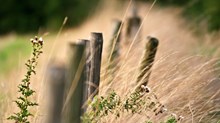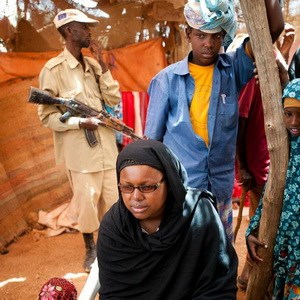Capturing the Faces of Famine
Somalia lost more than 4 percent of its total population in a famine in 2011. More than half of the lives lost were children under the age of five, and photographer and writer Amanda Koech was there to witness it firsthand.
"Hope is what the families in Somalia need," Koech says. "I know because it was what my family once needed too."
When the famine hit Somalia in 2011, she was reminded of the plight she and her family faced when Kenya suffered a drought when she was five. Although her parents were farmers, money was scarce, and they often had to rely on the support of charities that would bring food and water to her and her six other siblings. Much of her childhood was spent indoors in order to conserve body energy and avoid dehydration.
"Hope is what the families in Somalia need. I know because it was what my family once needed too."
"I remember the long, hot days during the drought because we were stopped from going outside to play. This made my days very long and empty," Amanda says.
Today Amanda serves as a World Vision communications officer, using her love for photography, writing (follow her blog), and video to help gather information about life-threatening situations and send it out to readers around the world.
When Amanda moved to Somalia to work with World Vision, she was also trained in Emergency Response communication so she could be equipped with security, first aid, and stress management skills, which is something she believes that Somalians are in need of to get through this time of hardship.
Harsh realities
To date, Somalia has one of the highest levels of malnutrition in the world. Although famines and droughts cannot be stopped, Amanda says her hope for Somalia is that its adverse effects on children and families can be slowed down significantly.
"For over 20 years, Somalia has experienced many challenges including conflict and natural disasters. A generation of children is coming of age without knowing peace, love or the opportunity to enjoy a secure environment," Amanda says.
The situation in Somalia was something personal for Amanda because she knows what it's like to live with hunger. "I like to describe my job as 'giving voice to the voiceless.'"
The 2011 drought is said to be the worst drought in over 60 years in Eastern Africa. Women and children would trek for many days at a time just to find food.
Providing solutions
At the height of the drought, there was limited access for Amanda's team to reach the more than 500,000 families in Southern Somalia because of the lack of roads and the expense to transport food. Despite the obstacles, relief efforts have been able to help build shelter projects, provide energy-efficient cooking stoves, help with new farming techniques, and build Child Friendly Spaces (CFS) for kids to gather in a safe area and learn different skills.
The goals of these projects are long-term solutions that will help increase the participation and unity among communities as well as to reach the most remote children who need it.
"All financial help will enable our staff to move these nutritious supplements to those children, teach mothers how to care and feed their children, ensure continued supply of critical medicines, and staff to care for mothers and children," Amanda says.
Until Amanda has a family of her own, she says she is dedicating her time to giving a voice to the children in Somalia through her communication work.
Read more about the famine in Somalia on World Vision's blog.
Cassie Jolene Schenck is TCW's editorial intern. Follow her on Twitter @cassiejolene91.
Subscribe to TCW's free email newsletter at this link for weekly updates and chances to win free books and music downloads.
Read more articles that highlight writing by Christian women at ChristianityToday.com/Women
 Read These Next
Read These Next

 Marriage RingsLike cycles in a tree's life, our marriage revealed patterns of stress and growth.
Marriage RingsLike cycles in a tree's life, our marriage revealed patterns of stress and growth.
 Disappointed? Celebrate Anyway.How I'm learning to embrace the life I have right now.
Disappointed? Celebrate Anyway.How I'm learning to embrace the life I have right now.
 Listening for God's Holy WhisperWhat I learned when I heard the words I didn’t want to hear
Listening for God's Holy WhisperWhat I learned when I heard the words I didn’t want to hear








 Homepage
Homepage
